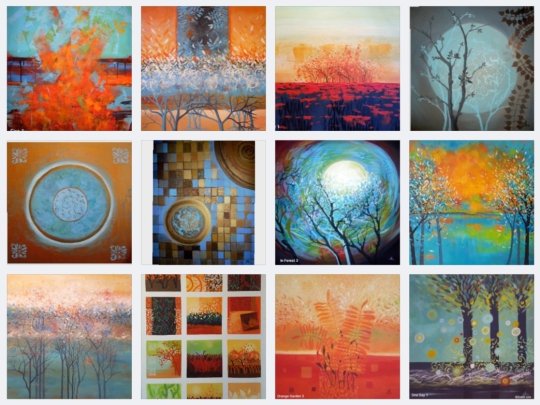#pictori contemporani
Explore tagged Tumblr posts
Text
Peisaje in pastel cu marea

View On WordPress
#Cadouri arta#galerii arta Bucuresti#pictori romani contemporani#Picturi pastel#Picturi peisaje apus#Tablouri apus soare#tablouri cu peisaje#Tablouri marea
0 notes
Text
Apus de soare
“Yellow Sunset 5P”, 35×50 cm. Pictura în pastel.

View On WordPress
#cadouri arta#galerie arta Bucuresti#pictori romani contemporani#Pictura apus#picturi in pastel#picturi marea#tablou peisaj marea#Tablouri apus soare#tablouri cu peisaje#tablouri marine
0 notes
Photo

Știri: Expoziție de pictură Bogdana Maria Daradici (5 decembrie 2017, București) Marți, 5 decembrie 2017, ora 18.30, în Sala Foaier a Cercului Militar Național din București…
#Bogdana Maria Daradici#București#cultură#expoziție#Mădălin Matica#Marius Tița#pictori contemporani#pictură#Pușa Roth
0 notes
Text
CGMB: Artiştii Marian Zidaru şi Sorin Ilfoveanu şi omul de afaceri Roger El Akoury - cetăţeni de onoare ai Capitalei
0 notes
Link
Artist: Charlotte Posenenske
Venue: Modern Art, London hosting Galerie Mehdi Chouakri, Berlin; Condo London 2019
Date: January 12 – February 16, 2019
Click here to view slideshow
Full gallery of images, press release, and link available after the jump.
Images:
Images courtesy of Modern Art, London and Galerie Mehdi Chouakri, Berlin
Press Release:
Modern Art is delighted to present an exhibition of works by Charlotte Posenenske for Condo London 2019 in association with Galerie Mehdi Chouakri, Berlin.
Charlotte Posenenske (b. Wiesbaden, 1930, d. Frankfurt, 1985) made pioneering contributions to Minimalist and Conceptual art during her short-lived artistic career. Rediscovered only posthumously, her predominantly sculptural output has influenced younger generations of artists since the 1990s.
The terms democratisation, variability, participation, and cooperation are crucial to an understanding of Posenenske���s work. Envisioning art as a social and participatory act that should be opened to wider public engagement, rather than a product defined by transactional values between individuals, Posenenske produced large-scale sculptural works that were functional and easy to install, including non-figurative panels, folded and tilted works, reliefs, and square tubes in steel and cardboard. She determined not to restrict the number of elements produced, and matched their retail prices to their manufacturing costs in order to undermine the compulsory capitalist value-added system of the art market.
Following considerable critical attention and in the wake of the political events of 1968 and the rise of the ‘art market’, Posenenske published a manifesto stating that art did not have the sufficient impact to solve urgent social issues. The document, which in turn marked her withdrawal from artistic production, concludes:
I find it difficult to come to terms with the fact that art can contribute nothing to the solution of pressing social problems.
– Charlotte Posenenske, “Statement”, 11 February 1968
Posenenske turned instead to sociology, attending Theodor Adorno’s class at Frankfurt University, before working in close collaboration with labour unions until her death in 1985. During this period, she refused to exhibit her work, and it is only in recent years that her significant contributions to sculpture, and in particular to socially-engaged art, have become clear.
The exhibition at Modern Art will comprise works from three key facets of Posenenske’s practice. Early works on paper from the 1950s demonstrate her exploration of the spatial qualities of the pictorial surface, informed by an interest in painters such as Cézanne and Mondrian. These works also indicate the beginnings of the de-subjectification of the artwork, and the distancing of the artist’s hand.
The Series B Reliefs, 1967, a group of sheet aluminium sculptures of elementary forms in primary colours, are among her earliest sculptural works. They were conceived as modular components with a degree of interactivity, allowing them to be hung in free combinations and orientations, with the intention of initiating a dialogue with the surrounding architectures.
The Series D Vierkantrohe (Square Tubes), 1967, are made of galvanized metal sheets and recall ventilation ducting. Here, Posenenske turned to industrially fabricated materials in the spirit of American counterparts such as Donald Judd and Richard Serra, signalling her abandonment of the individual artistic gesture. Similarly, the Series DW Square Tubes, also 1967, constructed from corrugated cardboard, are mass-produced and modular elements. It was Posenenske’s ambition that they be transformed at will, and activated with audience participation. This participatory element of Posenenske’s work invited discussions on authorship, and highlighted the social and political doctrines she would later devote her life to.
Charlotte Posenenske’s works are held by museum collections including The Art Institute of Chicago; Städtische Galerie im Lenbachhaus und Kunstbau, Munich; Musée National d’Art Moderne, Centre Pompidou, Paris; Museum für Moderne Kunst, Frankfurt; Museum of Contemporary Art, Chicago; The Museum of Modern Art, New York; Staatliche Museen zu Berlin; Tate Modern, London; Museum Ludwig, Cologne; and Museum Moderner Kunst Stiftung Ludwig Wien, Vienna.
In March 2019, an extended retrospective will open at Dia:Beacon, New York. The exhibition will later tour to Museu d’Art Contemporani de Barcelona; Kunstsammlung Nordrhein-Westfalen, Düsseldorf; and MUDAM, Luxembourg.
Link: Charlotte Posenenske at Modern Art
Contemporary Art Daily is produced by Contemporary Art Group, a not-for-profit organization. We rely on our audience to help fund the publication of exhibitions that show up in this RSS feed. Please consider supporting us by making a donation today.
from Contemporary Art Daily http://bit.ly/2GrqCa6
0 notes
Photo
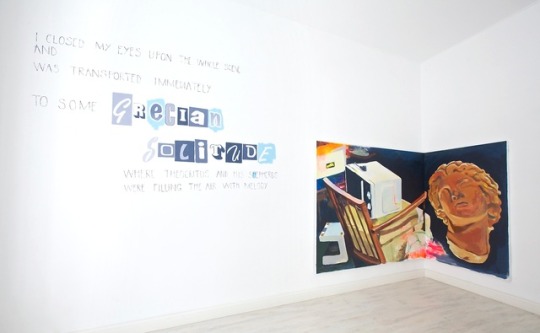
A Grecian Solitude
An exhibition of works by Tomas Pizá, curated by Cristina Ramos /// 1 April - 20 Mayo 2017, Addaya Centre d’art Contemporani, Mallorca
...
We do not know if Antiquity has existed, but at least we have dreamed it. Federico Fellini
The starting point of the paintings presented in A grecian solitude is an archive generated during the trip that Tomas Pizá did following the traces of the British William Beckford after his European Grand Tour two hundred years ago.
During the journey from Belgium to Italy, Pizá was collecting a series of ‘souvenirs’ including photographs, postcards, and innumerable anecdotes which, together with Beckford's own book published in 1783, formed the germ of a visual diary through which Pizá manipulates and reinterprets the ruins of history from a contemporary perspective.
Grand Tour is the name given to the European trip that young aristocrats took as part of their education in the seventeenth and eighteenth centuries. Its value laid in the knowledge gained from the cultural legacy of classical Antiquity and the Renaissance. The trip provided the unique opportunity to visit monuments and see works of art, in a time long before to the reproduction of images. The Grand Tour would be one of the great engines of cultural travel and perhaps, of what we consider today as tourism. In the same way, a great multitude of travel literature were produced as a result of this journey, of which the book Dreams, waking thoughts and incidents by Beckford stands out for being not only an epistolary, but also a descriptive composition of fantastic and surreal nature.
Some quotations from the book have been included in a short publication made for the exhibition by the artist in collaboration with the curator, which includes compositions by Pizá from its archive of postcards, and a curatorial text on some notions of the exhibition.
Pizá delves into the narrative of Beckford to conceive a set of images whose ideological context navigates around the idea of the Mediterranean, the search for identity and the tension of the poetic in mass culture. Formally, the scenes of the paintings are created by juxtaposing visual fragments from the archive, for which the first translation of the image is into collage, to be worked afterwards with the language of painting. The final image maintains an unreal element in its figuration since the composition is not articulated following faithfully the architecture of reality.
The paintings are deeply rooted in history, each brushstroke of oil paint containing several layers of meaning, filled with iconographic, literary, and pictorial references. In this line, we find a series of works with small format Worship my ribs at Florence, my skull at Bologna, Sienna and Rome, whose images come from the Fontanelle Cemetery in Naples, an ancient necropolis that keeps the skeletal remains of those who were too poor to pay for a proper burial. These works establish a poetic point between the transience of the life and the end of the trip, since it was in Naples where both, Pizá and Beckford, returned to the geography of their islands.
Pizá’s stylistic references are varied, from the American painter Eric Fischl in the simulation of the real space, to the warm pop of the English David Hockney in the treatment of the light, passing through Ronald Kitaj and the subject of the exile, of the journey as longing for desires.
Definitely Tomas Pizá’s trip has been one over time, as the Europe that William Beckford portrays is a classic in itself, a book that never ends saying what it has to say. Permanent literature, as Schopenhauer would say.
It is through painting that Pizá associates this eternal return, the transience of the old to the modern, from the repetitive to the archaic tradition. And it is precisely in this painted relationship where the new is added to the old, without ever completely erasing it, but transfiguring it incessantly.
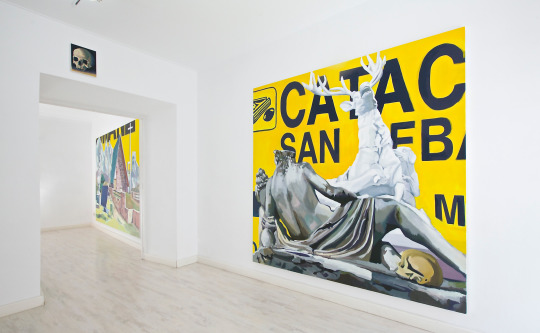
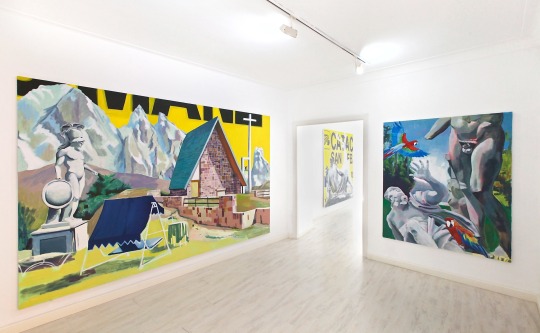
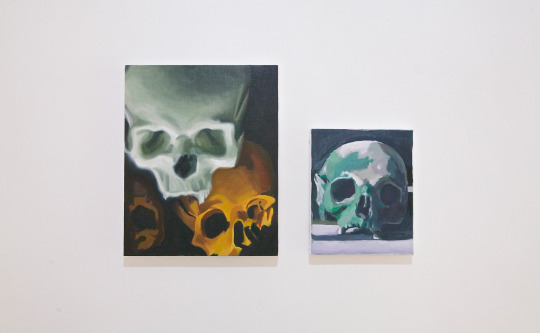
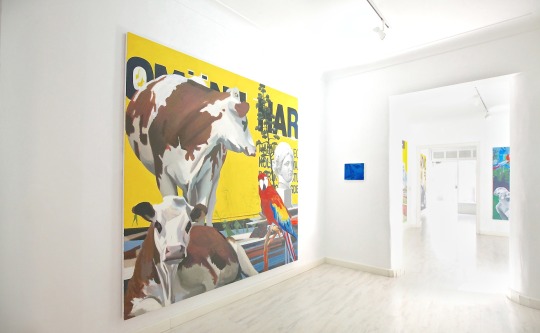
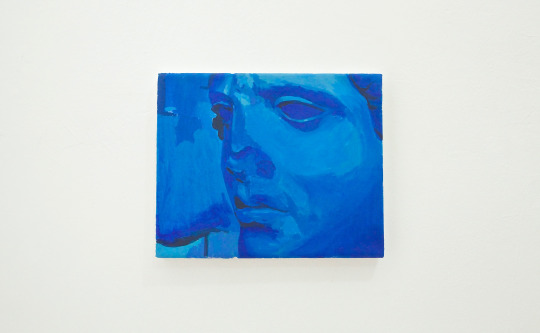

0 notes
Text
Spring Bouquet 12

#tablouri flori#picturi cu flori#Picturi vase chinezești#Tablouri flori cores#still life#galerie arta#pictori romani contemporani#Tablouri buchete
0 notes
Text
Miniaturi cu peisaje











#Miniaturi peisaje#Tablouri peisaje#Picturi peisaje#sunset#Picturi apusuri#Picturi marea#pictori romani contemporani#seascape#picturi marine
0 notes
Text
Flori de primavara

View On WordPress
#amenajari interioare#cadouri#decoratiuni interioare#Flori primavara#Galerii arta Bucuresti#galerii pictura Bucuresti#pictori romani contemporani#Pictura flori cires#tablouri cu flori#tablouri flori#Tablouri primavara
0 notes
Text
Idei de amenajări

View On WordPress
#acuarele peisaje#Cadouri unicat#Decoratiuni pereti#galerii pictura Bucuresti#Idei amenajari interioare#pictori romani contemporani#Picturi în acuarela#Picturi peisaje#tablouri peisaje
0 notes
Text
Pictura cu Centrul Vechi
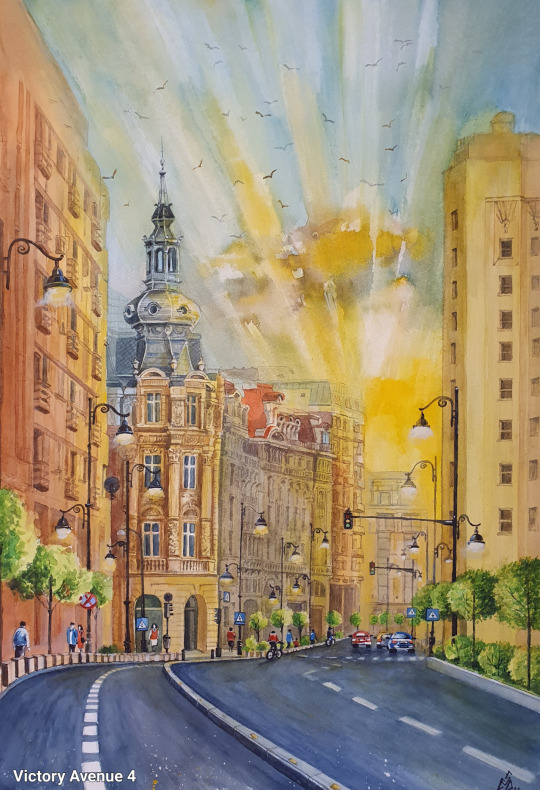
View On WordPress
#Acuarela peisaj Bucuresti#amenajari interioare#Cadouri unicat#Decoratiuni pereti#galerii arta Bucuresti#galerii pictura Bucuresti#pictori romani contemporani#Pictura Centrul Vechi#Tablou peisaj Bucuresti#tablouri cu peisaje
0 notes
Text
Video Gabriela Călinoiu
https://www.facebook.com/share/p/hM8UU4FwA4BY25yq/

View On WordPress
#amenajari interioare#cadouri#decoratiuni#expozitii pictura#Galerii arta Bucuresti#galerii pictura Bucuresti#peisaje#pictori romani contemporani#picturi abstracte#tablouri#tablouri flori
0 notes
Text
Picturi peisaje cu cai
View On WordPress





#acuarele peisaje#cadouri picturi#Decorațiuni interioare#Galerie arta Bucuresti#galerii pictura Bucuresti#miniaturi peisaje#pictori romani contemporani#picturi animale#picturi cai#tablouri peisaje#Horses paintings
0 notes
Text
Peisaj " One Day 1"
Pictura abstracta realizata pe panza.

View On WordPress
#Amenajări interioare#cadouri#Decorațiuni interioare#Galerii arta Bucuresti#peisaje abstracte#pictori romani contemporani#picturi abstracte#tablou abstract
0 notes
Text
PICTURA ABSTRACTA

View On WordPress
#abstract art#amenajari interioare#art gallery bucharest#arta abstracta#arte plastice#bucharest paintings#galerie pictura#Galerii arta Bucuresti#pictori romani contemporani#picturi foc#tablouri abstracte
0 notes
